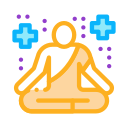Build Your Science-Backed Yoga Routine
Start with three to five days weekly, ten to twenty minutes per session, combining gentle movement and breath. Increase gradually as recovery allows. Intensity should support rather than spike arousal. Share what schedule feels both doable and emotionally nourishing for you.
Build Your Science-Backed Yoga Routine
Use a simple log: minutes practiced, breath ratio, mood, sleep, and stress level. Patterns emerge faster than you expect. Post your first week’s results or questions, and we’ll help interpret trends grounded in the theme’s scientific principles.






